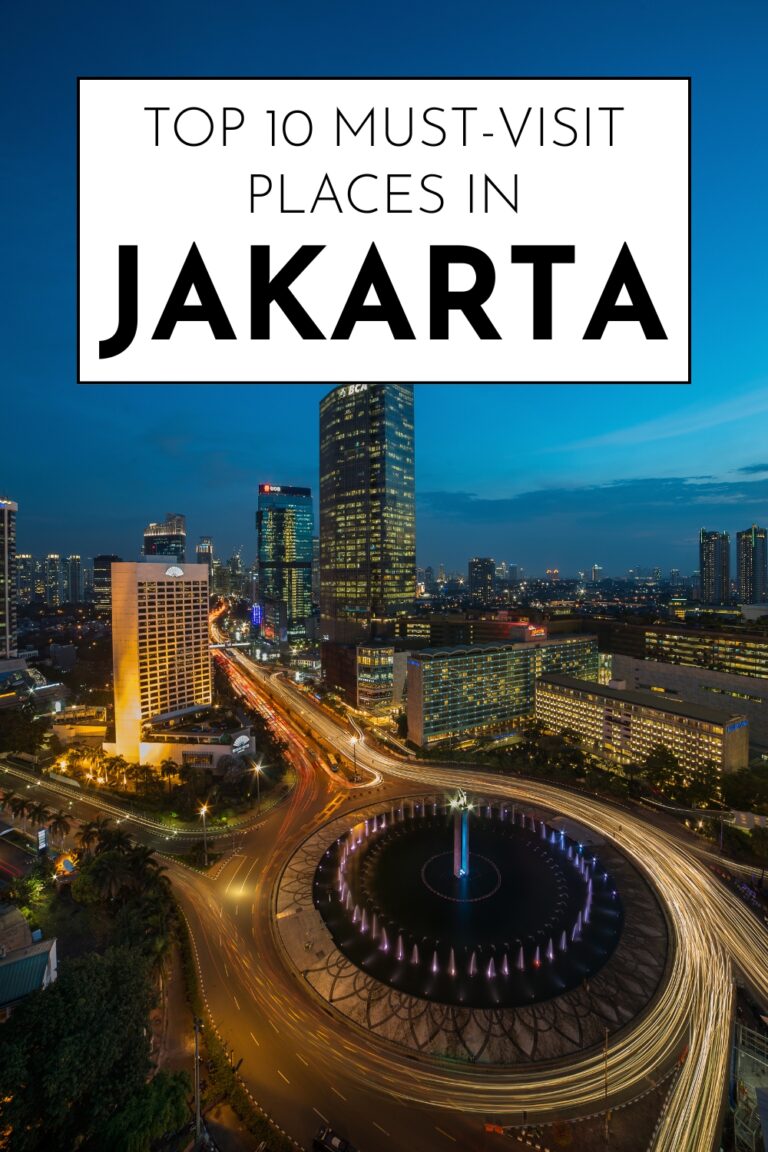Jakarta, Indonesia’s sprawling capital city, stands as one of Southeast Asia’s most dynamic and culturally rich destinations. Home to over 10 million people, this mega-city serves as the political, economic, and cultural heart of the world’s fourth most populous nation. Despite its reputation as a business hub, Jakarta offers visitors an incredible array of experiences that showcase Indonesia’s diverse heritage and modern aspirations.
The city’s charm lies in its fascinating contrasts. Ancient traditions blend seamlessly with cutting-edge modernity, while street food vendors operate in the shadows of gleaming skyscrapers. Jakarta’s neighborhoods each tell different stories – from the colonial architecture of Kota Tua to the upscale shopping districts of Central Jakarta, from the cultural enclaves of Menteng to the bustling markets of Glodok.
What makes Jakarta truly special is its role as a melting pot of Indonesian cultures. With people from across the archipelago calling it home, the city offers authentic experiences from Sumatra to Papua, all within a single urban landscape. This cultural diversity is reflected in everything from the incredible variety of local cuisine to the architectural styles found throughout the metropolitan area.
Jakarta’s tropical climate means the city buzzes with energy year-round, though the best experiences often come from understanding when and how to navigate its unique rhythms. The city’s extensive public transportation network, including the modern TransJakarta bus system and new MRT lines, makes exploring easier than ever before.
Let’s explore the ten most essential places that make Jakarta an unmissable destination for anyone wanting to understand Indonesia’s past, present, and future.
1. Kota Tua (Old Town) – Historical Heart

Jakarta’s Old Town, known locally as Kota Tua, serves as the city’s historical center and offers visitors a journey through Indonesia’s colonial past. This UNESCO World Heritage site preserves Dutch colonial architecture from the 17th century when Jakarta was known as Batavia, the capital of the Dutch East Indies.
Colonial Architecture and Museums
The area features well-preserved Dutch colonial buildings that house several important museums. The Jakarta History Museum, located in the former City Hall, provides comprehensive insights into the city’s transformation from a small trading port to a major metropolitan center.
Fatahillah Square forms the heart of Kota Tua, surrounded by colonial buildings that showcase Dutch architectural styles adapted to tropical conditions. The square comes alive with street performers, local vendors, and tourists throughout the day, creating a vibrant atmosphere that connects past and present.
Cultural Immersion and Photography
The cobblestone streets and vintage architecture create perfect backdrops for photography, especially during golden hour when the warm light highlights the colonial facades. Colorful Dutch-style buildings provide striking contrasts against the tropical sky.
Local guides offer walking tours that reveal hidden stories about the colonial period, Indonesian independence movement, and the area’s ongoing restoration efforts. These tours provide deeper understanding of Jakarta’s complex history and cultural evolution.
Best time to visit: Early morning or late afternoon to avoid heat
Duration: 2-3 hours
Highlights: Museums, colonial architecture, street performances
Entry fees: Various museum fees apply
2. National Monument (Monas) – Symbol of Independence
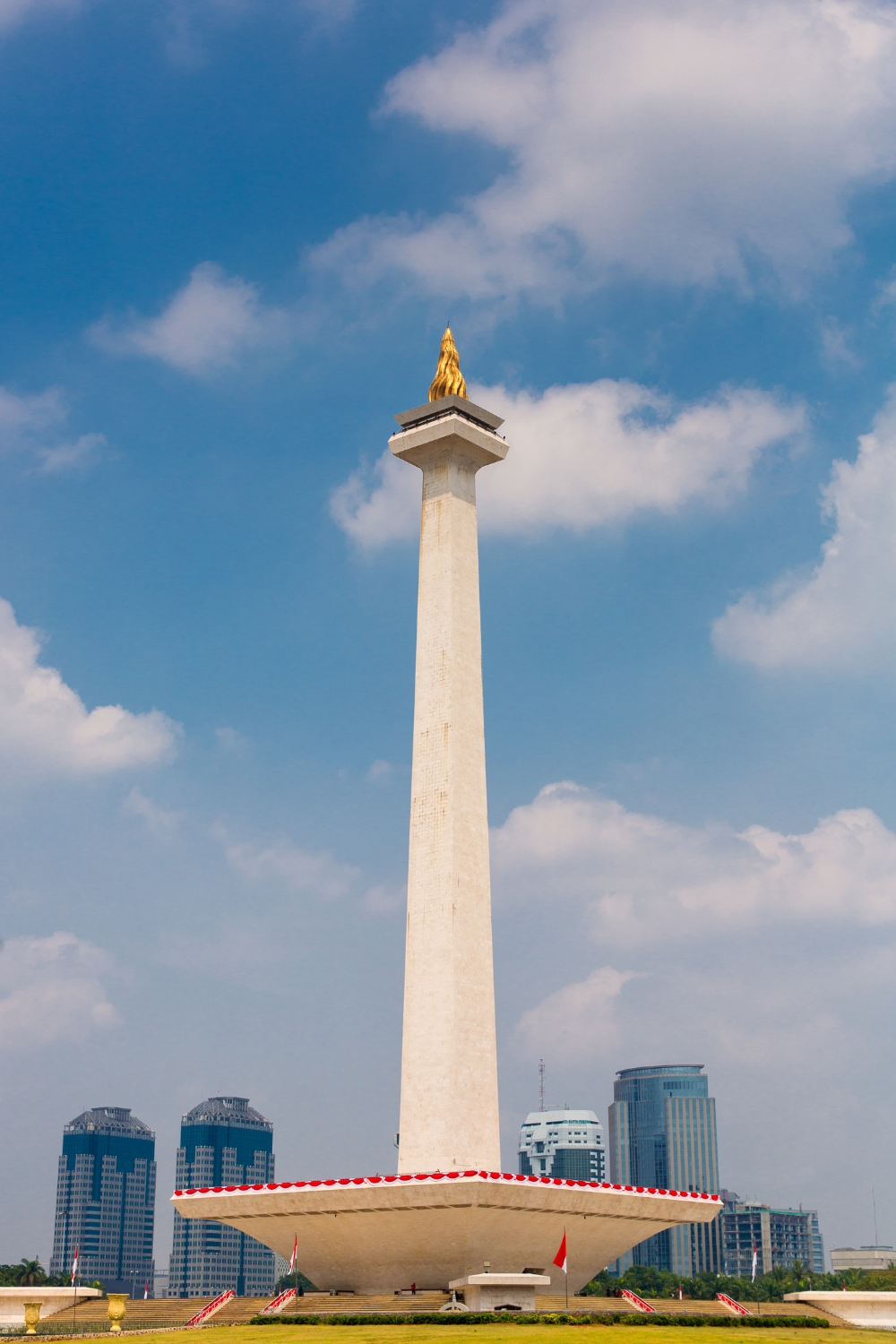
The National Monument, locally known as Monas, stands as Jakarta’s most iconic landmark and a powerful symbol of Indonesian independence. This 132-meter tall monument dominates the city’s skyline and offers both historical significance and spectacular panoramic views.
Historical Significance and National Pride
Monas commemorates Indonesia’s struggle for independence from Dutch colonial rule. The monument’s design incorporates symbolic elements – the flame at the top represents the eternal flame of independence, while the base houses a comprehensive museum documenting Indonesia’s journey to freedom.
The surrounding Merdeka Square, one of the world’s largest city squares, hosts national celebrations and public events throughout the year. The square’s vast green spaces provide a peaceful respite from Jakarta’s urban intensity.
Panoramic City Views
An elevator takes visitors to the observation deck near the monument’s peak, offering 360-degree views of Jakarta’s sprawling urban landscape. The views are particularly stunning at sunset when the city’s lights begin to twinkle across the horizon.
The observation deck provides unique perspectives on Jakarta’s diverse neighborhoods, from the historic Kota Tua to the modern business district of Sudirman. Clear days offer views extending to the mountains surrounding the Jakarta basin.
Height: 132 meters
Best viewing time: Sunset
Facilities: Museum, observation deck, park grounds
Significance: National independence symbol
3. Istiqlal Mosque – Architectural Marvel
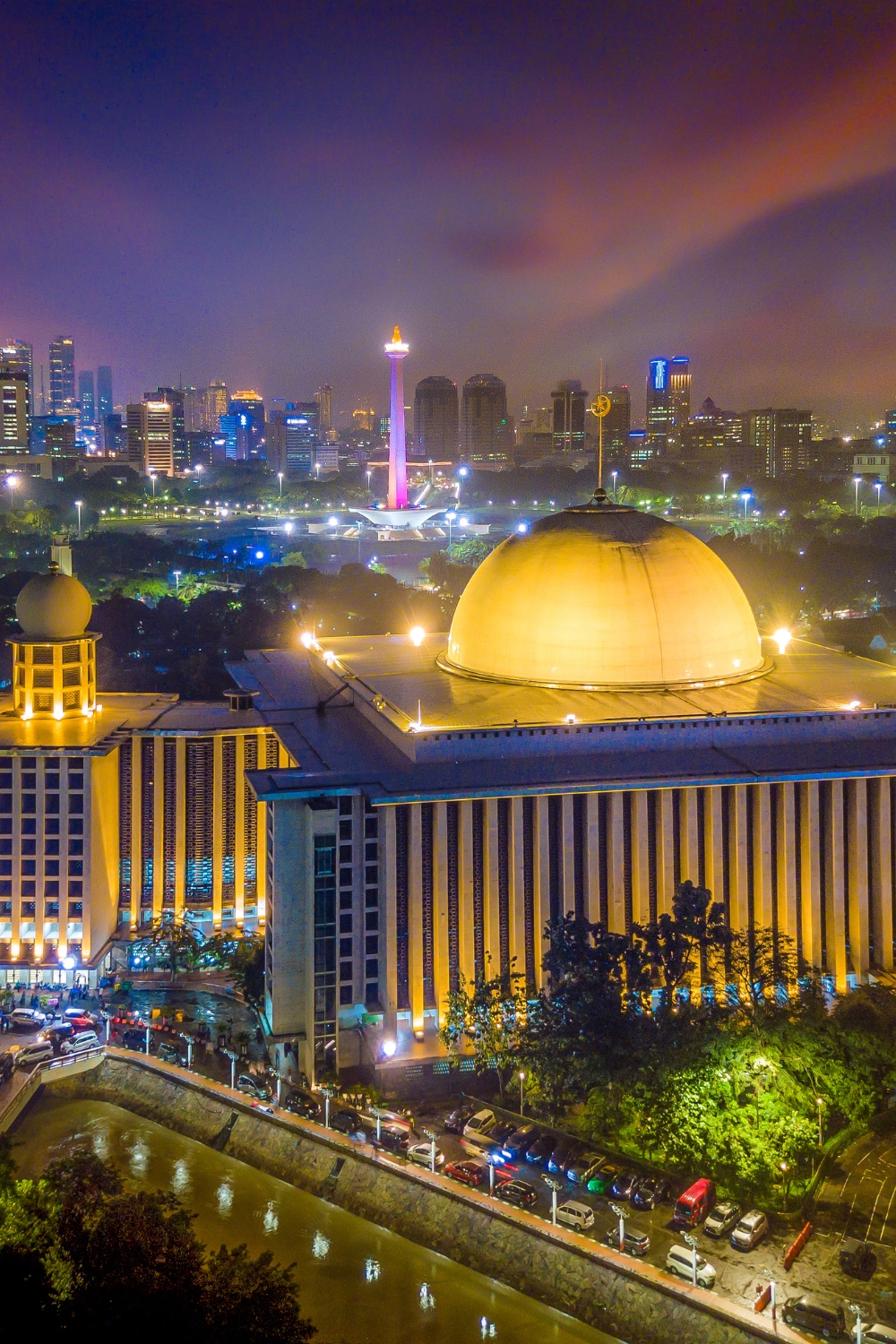
Istiqlal Mosque stands as the largest mosque in Southeast Asia and one of the most impressive examples of modern Islamic architecture. This magnificent structure can accommodate over 120,000 worshippers and represents Indonesia’s status as the world’s largest Muslim-majority nation.
Modern Islamic Architecture
The mosque’s contemporary design incorporates traditional Islamic elements with modern architectural techniques. The main prayer hall features a massive dome supported by minimal columns, creating an incredibly spacious and airy interior that promotes spiritual reflection.
The building’s clean lines and geometric patterns reflect Islamic architectural principles while showcasing Indonesia’s modern engineering capabilities. The mosque’s construction required over 17 years and involved architects and craftsmen from across the Islamic world.
Interfaith Harmony and Cultural Understanding
Istiqlal Mosque sits directly across from Jakarta Cathedral, symbolizing Indonesia’s commitment to religious tolerance and interfaith harmony. This proximity represents the nation’s founding principle of unity in diversity (Bhinneka Tunggal Ika).
Guided tours welcome visitors of all faiths, providing opportunities to learn about Islamic practices, Indonesian religious traditions, and the mosque’s role in national life. The tours include explanations of Islamic architecture and the mosque’s significance in Indonesian society.
Capacity: 120,000 worshippers
Architecture: Modern Islamic design
Tours: Available for all visitors
Significance: Religious tolerance symbol
4. Taman Mini Indonesia Indah – Cultural Showcase
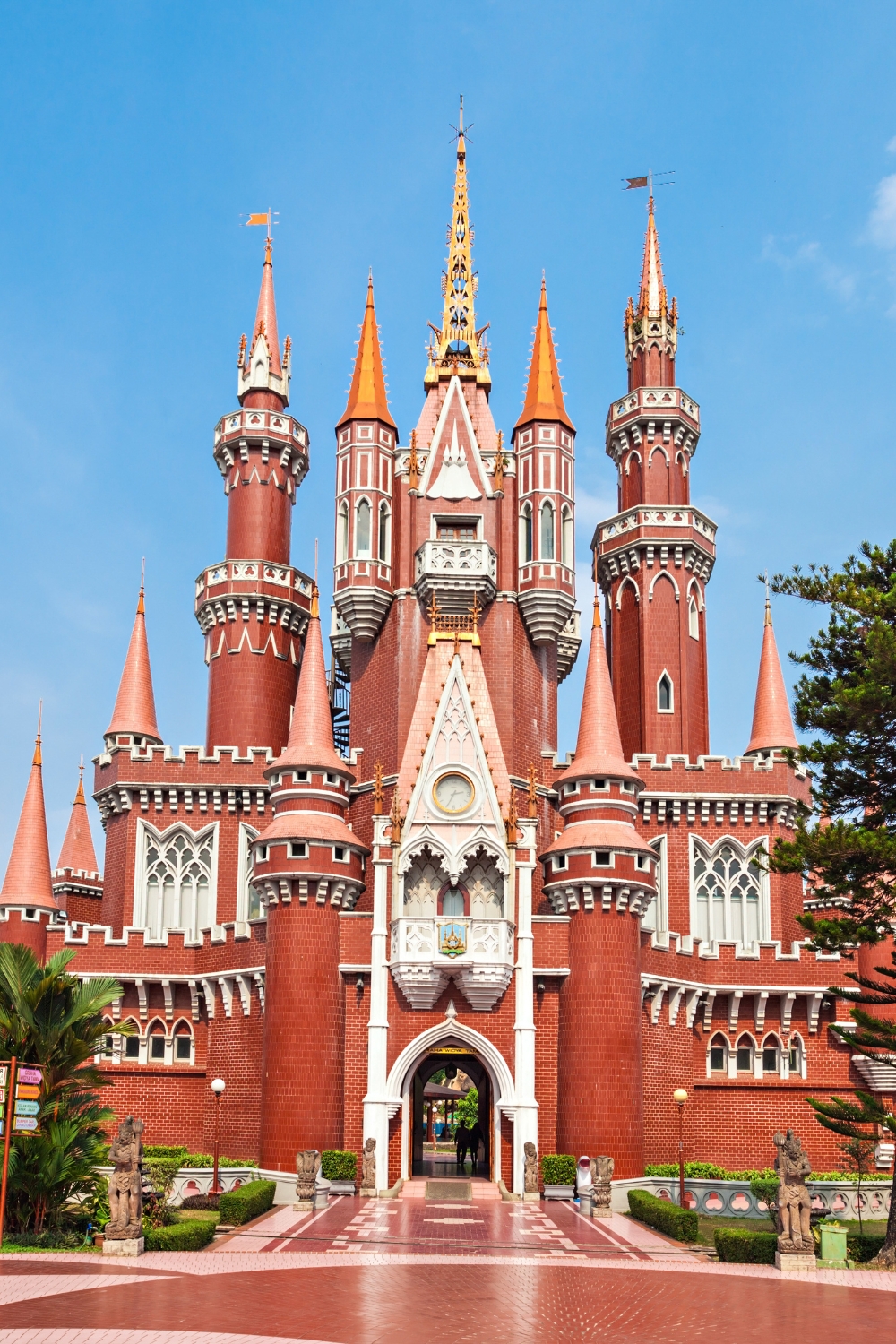
Taman Mini Indonesia Indah (Beautiful Indonesia Miniature Park) offers visitors a comprehensive introduction to Indonesia’s incredible cultural diversity. This 150-hectare park showcases traditional architecture, customs, and arts from all 34 Indonesian provinces in a single location.
Traditional Architecture and Cultural Pavilions
Each provincial pavilion features authentic traditional architecture built by skilled craftsmen from the respective regions. These structures represent various Indonesian ethnic groups and architectural styles, from Batak houses of North Sumatra to Torajan houses of South Sulawesi.
The pavilions house cultural artifacts, traditional costumes, and historical displays that provide insights into Indonesia’s rich cultural heritage. Regular cultural performances showcase traditional dances, music, and ceremonies from different regions.
Educational Value and Family Activities
The park functions as an open-air museum that makes Indonesian culture accessible to both domestic and international visitors. Interactive displays and cultural demonstrations provide engaging ways to learn about Indonesian traditions and history.
Various attractions within the park include cable car rides, boat tours through Indonesian waters replica, and an IMAX theater showing documentaries about Indonesian culture and nature. These activities make learning about Indonesian culture entertaining for visitors of all ages.
Size: 150 hectares
Features: 34 provincial pavilions
Activities: Cultural performances, rides, museums
Best for: Families, cultural learning
5. Glodok (Chinatown) – Cultural Heritage
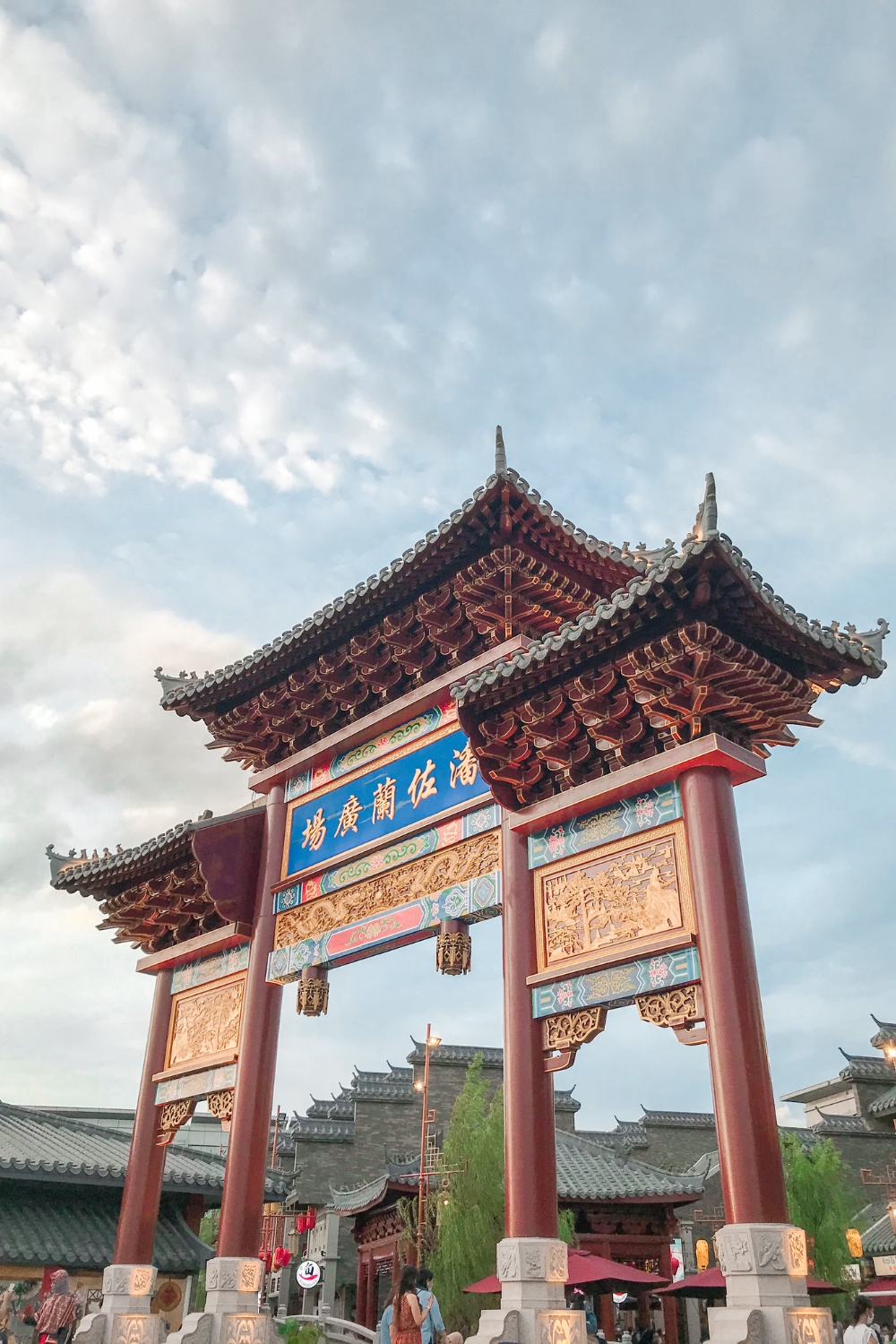
Glodok, Jakarta’s historic Chinatown, represents one of the oldest and most vibrant Chinese communities in Southeast Asia. This densely packed neighborhood offers authentic cultural experiences, traditional architecture, and some of Jakarta’s best Chinese cuisine.
Traditional Chinese Architecture and Temples
The area features traditional Chinese shophouses, temples, and cultural centers that have been maintained by the Chinese-Indonesian community for generations. Vihara Dharma Bhakti, the oldest Chinese temple in Jakarta, showcases traditional Chinese religious architecture and practices.
Red lanterns, traditional signage, and Chinese architectural details create an authentic atmosphere that transports visitors to historic Chinese settlements. The narrow streets and traditional building styles provide glimpses into how Chinese immigrants adapted their culture to Indonesian conditions.
Culinary Adventures and Street Food
Glodok offers some of Jakarta’s most authentic Chinese cuisine, from hole-in-the-wall noodle shops to established restaurants serving traditional dishes. The area is famous for its bakmi (noodles), dim sum, and Chinese-Indonesian fusion cuisine.
Street food vendors throughout the neighborhood serve affordable and delicious snacks that reflect the Chinese-Indonesian culinary tradition. The combination of Chinese cooking techniques with Indonesian ingredients creates unique flavors found nowhere else in the world.
Cultural focus: Chinese-Indonesian heritage
Best for: Food enthusiasts, cultural immersion
Highlights: Traditional temples, authentic cuisine
Atmosphere: Bustling, authentic, historic
6. Ancol Dreamland – Entertainment Complex
Ancol Dreamland (Taman Impian Jaya Ancol) serves as Jakarta’s premier entertainment destination, offering beach activities, theme parks, and recreational facilities along Jakarta Bay. This massive complex provides family-friendly entertainment and relief from the city’s urban intensity.
Beach Activities and Water Sports
Ancol Beach, while not pristine, offers the closest beach experience to Jakarta’s city center. The beach features water sports activities, boat rentals, and seafood restaurants with bay views. Regular beach maintenance and development projects continue to improve the area’s appeal.
The marina area provides boat tours of Jakarta Bay and access to the nearby Thousand Islands (Kepulauan Seribu), making Ancol a gateway to pristine tropical islands just hours from the city center.
Theme Parks and Family Entertainment
The complex includes several theme parks, including Dunia Fantasi (Fantasy World) with roller coasters and rides, Atlantis Water Adventure for water-based fun, and SeaWorld Indonesia featuring marine life exhibits and shows.
These attractions provide full-day entertainment options for families and groups. The parks feature both international-standard rides and attractions with Indonesian cultural themes, creating unique entertainment experiences.
Location: Jakarta Bay waterfront
Activities: Beach, theme parks, water sports
Best for: Families, entertainment
Facilities: Hotels, restaurants, recreational areas
7. Menteng District – Cultural Elegance
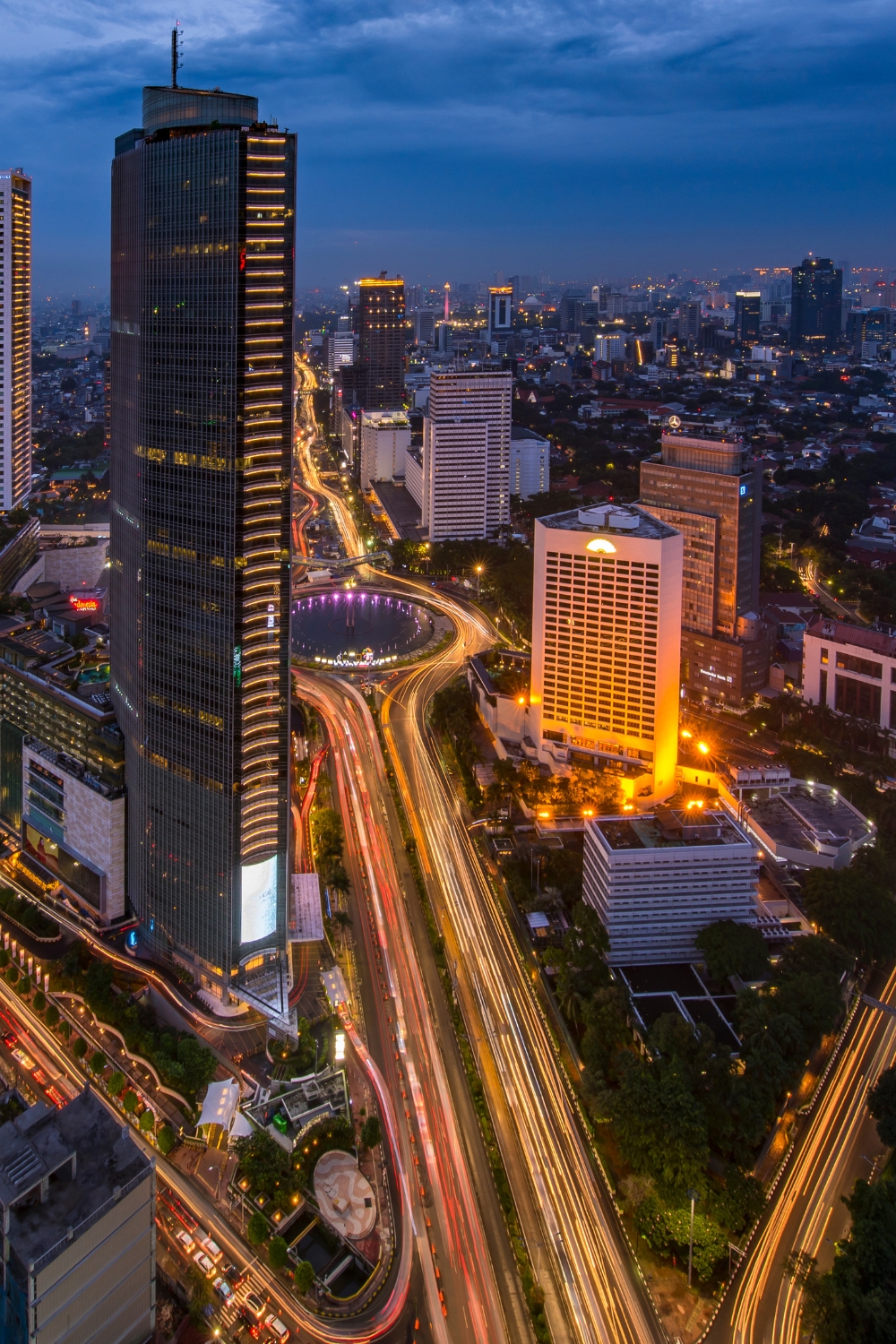
Menteng represents Jakarta’s most prestigious residential area and showcases the city’s cultural sophistication. This leafy neighborhood features art deco architecture, cultural institutions, and tree-lined streets that provide a peaceful contrast to Jakarta’s busier areas.
Art Deco Architecture and Historic Buildings
The district features beautiful examples of 1920s and 1930s art deco architecture, including private residences and public buildings designed during the Dutch colonial period. These structures represent some of the finest examples of tropical art deco architecture in Southeast Asia.
Walking tours through Menteng reveal architectural details and historical stories about the area’s development as an elite residential district. Many buildings have been carefully preserved and continue to house important cultural and governmental institutions.
Cultural Institutions and Museums
Menteng houses several important cultural institutions, including the Textile Museum, which showcases Indonesia’s rich textile traditions, and various art galleries featuring contemporary Indonesian art. These institutions provide insights into Indonesian artistic heritage and modern creative expression.
The neighborhood’s cultural atmosphere is enhanced by its role as home to many Indonesian artists, writers, and intellectuals. This creative community contributes to the area’s reputation as Jakarta’s cultural heart.
Character: Upscale residential and cultural
Architecture: Art deco, colonial
Attractions: Museums, galleries, historic buildings
Atmosphere: Peaceful, sophisticated, cultural
8. Grand Indonesia and Plaza Indonesia – Modern Shopping
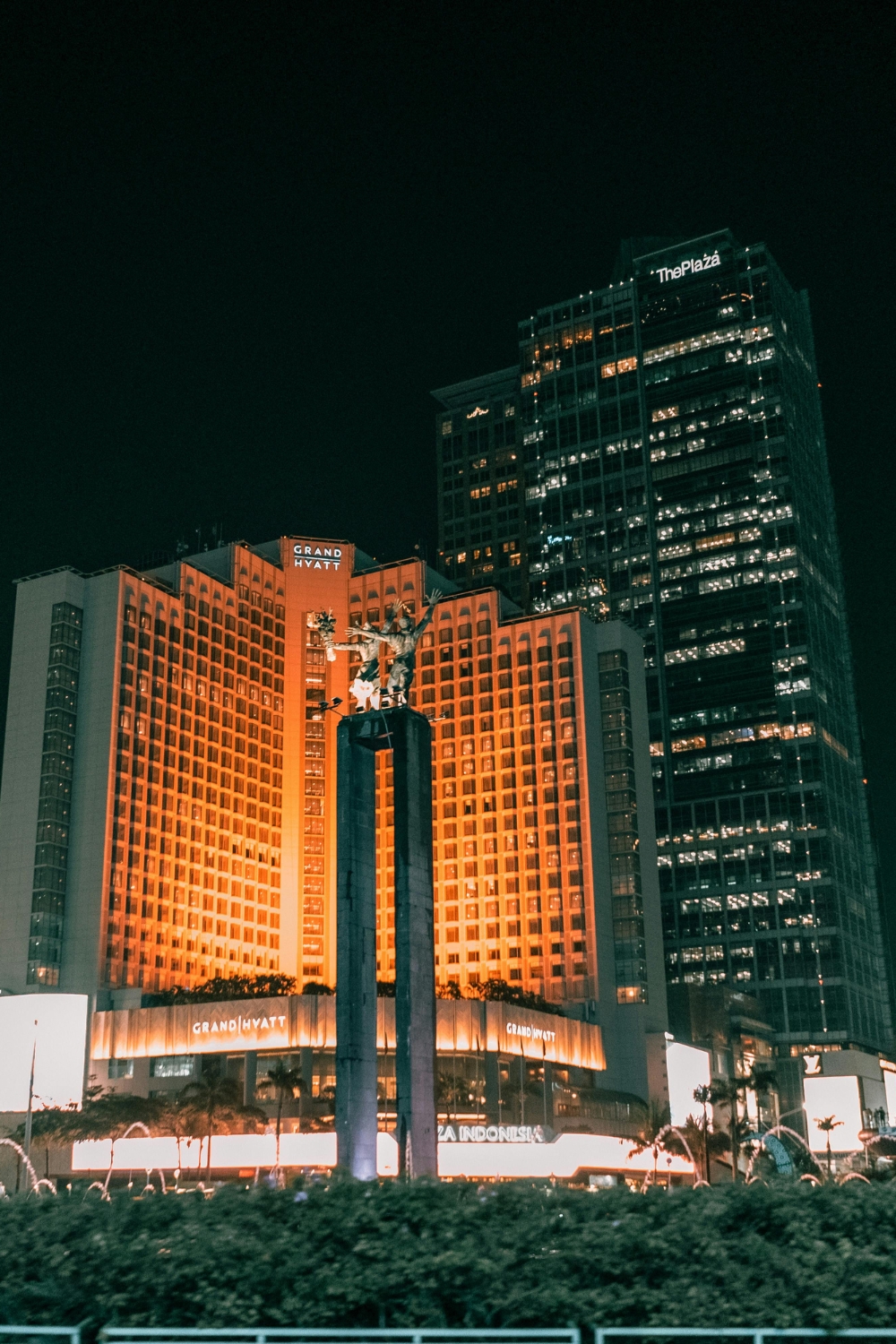
The Grand Indonesia and Plaza Indonesia complex represents Jakarta’s modern face and serves as one of Southeast Asia’s premier shopping destinations. This massive development showcases Indonesia’s economic growth and consumer culture while providing world-class shopping and dining experiences.
International Shopping and Luxury Brands
The complex houses hundreds of international and local brands, from luxury fashion to electronics, books, and home goods. The shopping centers feature both global brands and Indonesian designers, providing comprehensive retail experiences.
The mall’s design incorporates modern architecture with Indonesian cultural elements, creating shopping environments that reflect both international standards and local identity. Air conditioning and modern amenities provide comfortable shopping experiences despite Jakarta’s tropical climate.
Dining and Entertainment Options
The complex offers incredible dining variety, from international fine dining restaurants to Indonesian regional specialties and casual food courts. The range of options reflects Jakarta’s position as a cosmopolitan city with diverse culinary influences.
Entertainment facilities include cinemas showing both international and Indonesian films, gaming areas, and regular cultural events and exhibitions. These amenities make the complex a social destination beyond just shopping.
Size: Multi-building complex
Features: Shopping, dining, entertainment
Brands: International and local
Amenities: Modern facilities, events
9. Sunda Kelapa Harbor – Maritime Heritage
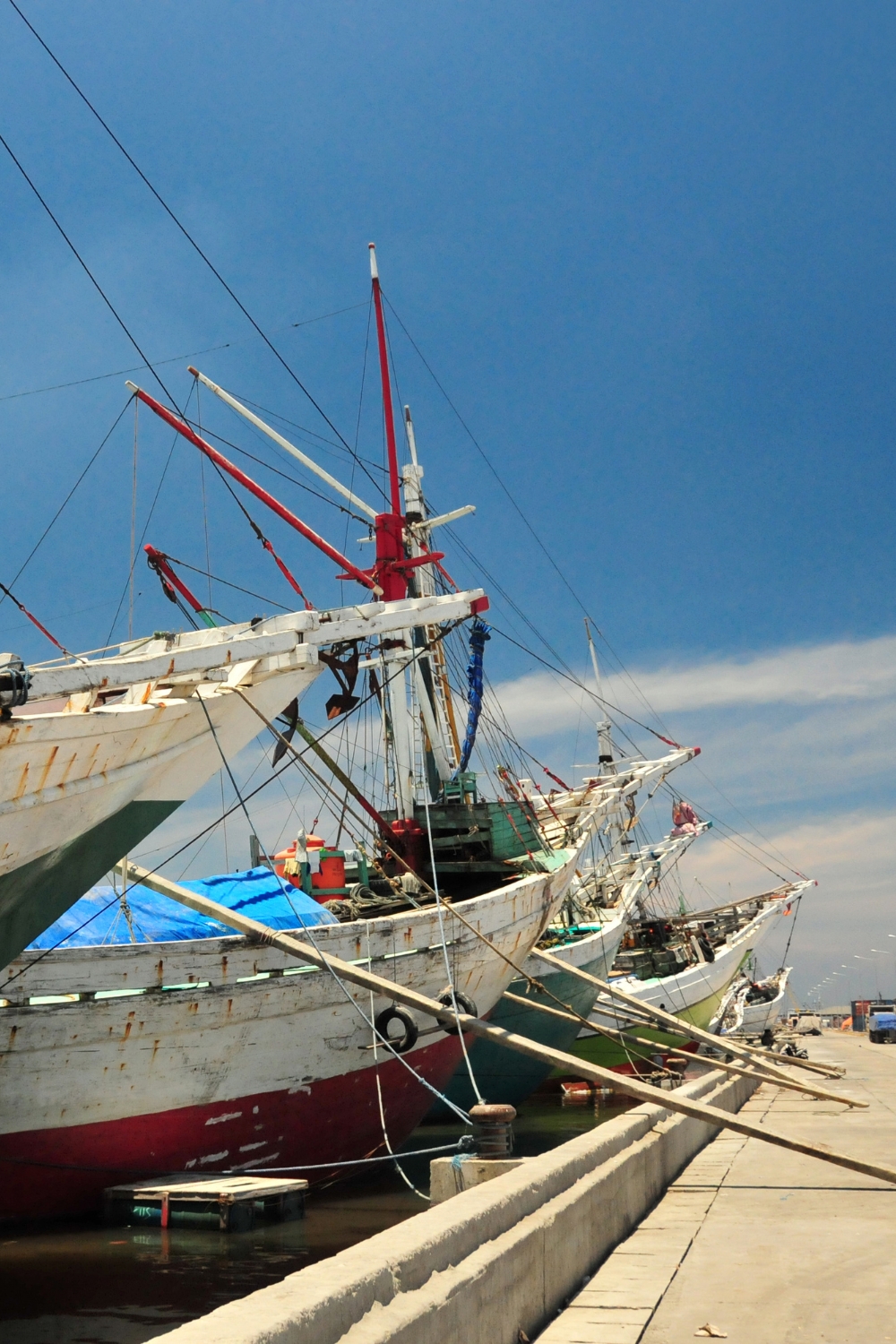
Sunda Kelapa Harbor offers visitors a glimpse into Jakarta’s maritime heritage and Indonesia’s continuing connection to traditional seafaring. This working harbor showcases traditional wooden schooners (pinisi) that still carry cargo throughout the Indonesian archipelago.
Traditional Wooden Ships and Maritime Culture
The harbor features dozens of traditional pinisi schooners that represent centuries-old Indonesian shipbuilding techniques. These wooden vessels, originally from South Sulawesi, continue to transport goods between Indonesian islands using traditional sailing methods combined with modern engines.
Visitors can observe loading and unloading operations, interact with sailors, and learn about traditional maritime practices that remain essential to Indonesia’s inter-island commerce. The harbor provides authentic insights into Indonesian maritime culture.
Historical Significance and Cultural Learning
Sunda Kelapa served as Jakarta’s original port and played crucial roles in the spice trade that attracted European colonizers. The harbor’s history connects to Indonesia’s position as a major maritime trading nation throughout history.
Guided tours explain the harbor’s historical importance, traditional shipbuilding techniques, and the continuing role of traditional sailing vessels in modern Indonesian commerce. These tours provide cultural education and appreciation for Indonesian maritime traditions.
Type: Working traditional harbor
Features: Traditional pinisi ships
Activities: Tours, cultural learning
Historical significance: Original Jakarta port
10. Ragunan Zoo – Wildlife Conservation
Ragunan Zoo serves as Jakarta’s premier wildlife conservation facility and provides important educational opportunities about Indonesian biodiversity. This 147-hectare zoo houses over 2,000 animals representing species from across Indonesia and around the world.
Indonesian Wildlife and Conservation
The zoo specializes in Indonesian wildlife, including endangered species like Sumatran tigers, orangutans, and Komodo dragons. These exhibits provide opportunities to see Indonesian wildlife that would otherwise require extensive travel to remote locations.
Conservation programs at the zoo focus on breeding endangered Indonesian species and supporting wildlife protection efforts throughout the archipelago. Educational displays explain conservation challenges and efforts to protect Indonesia’s incredible biodiversity.
Family Education and Recreation
The zoo’s extensive grounds provide pleasant walking environments with shaded paths, lakes, and picnic areas. The facility serves as an important recreational space for Jakarta families while providing wildlife education opportunities.
Special programs include night tours, animal feeding demonstrations, and educational workshops that teach visitors about wildlife conservation and Indonesian biodiversity. These programs make learning about conservation engaging and memorable.
Size: 147 hectares
Animals: 2,000+ specimens
Focus: Indonesian wildlife conservation
Activities: Education, recreation, conservation programs
Planning Your Jakarta Adventure
Getting Around Jakarta
Jakarta’s public transportation system has improved dramatically with the addition of TransJakarta bus rapid transit, MRT (Mass Rapid Transit), and LRT (Light Rail Transit) lines. These modern systems provide efficient ways to avoid Jakarta’s notorious traffic congestion.
Ride-sharing services like Gojek and Grab offer convenient and affordable transportation throughout the city. These services include motorcycle taxis (ojek) that can navigate traffic more quickly than cars, though safety considerations should be evaluated.
Traditional transportation options include bajaj (three-wheeled vehicles) and regular taxis, though these may be slower due to traffic conditions. Walking is practical in specific areas like Kota Tua and Menteng, but the city’s size makes public transportation essential for longer distances.
Best Time to Visit
Dry Season (April-September): Less rainfall makes outdoor activities more comfortable, though temperatures remain warm and humid. This period offers the most reliable weather for sightseeing and outdoor activities.
Wet Season (October-March): Higher rainfall and humidity, but fewer crowds and lush green spaces. Brief afternoon thunderstorms are common but usually don’t last long. Indoor attractions remain fully accessible.
Jakarta’s tropical climate means temperatures stay consistent year-round (26-32°C), so clothing choices focus more on rain protection and comfort rather than seasonal temperature variations.
Cultural Considerations and Local Etiquette
Jakarta’s multicultural population creates a generally tolerant and welcoming atmosphere for visitors. However, Indonesia is a predominantly Muslim nation, so modest dress is appreciated, especially when visiting religious sites.
Learning basic Indonesian phrases enhances interactions with locals and shows respect for the culture. Many Jakarta residents speak some English, particularly in tourist areas and modern shopping centers, but efforts to use Indonesian are always appreciated.
The city’s diversity means various cultural practices coexist, from Islamic traditions to Chinese customs and modern international lifestyle. Observing and respecting these different cultural expressions adds depth to the Jakarta experience.
Conclusion
Jakarta offers an extraordinary urban experience that combines historical significance, cultural diversity, and modern dynamism in ways found nowhere else in Southeast Asia. From the colonial architecture of Kota Tua to the modern shopping complexes of central Jakarta, from traditional markets to contemporary cultural institutions, the city provides comprehensive insights into Indonesia’s past, present, and future.
What makes Jakarta truly special is its role as a living showcase of Indonesian diversity. The city’s neighborhoods each tell different stories about the nation’s complex history and multicultural identity. This diversity creates opportunities for authentic cultural experiences, from sampling regional cuisines to observing traditional practices that have been preserved and adapted for urban life.
These ten must-visit places represent the essential Jakarta experience, but they’re just the beginning of what this remarkable city offers. Jakarta’s greatest strength lies in its ability to surprise visitors with unexpected discoveries – hidden temples in busy neighborhoods, incredible street food in unlikely locations, and moments of cultural insight that provide deeper understanding of Indonesian society.
Whether you’re interested in history, culture, cuisine, shopping, or modern urban experiences, Jakarta delivers with an intensity and authenticity that reflects its position as one of Asia’s most important cities. The combination of cultural richness, historical significance, and modern amenities makes Jakarta an ideal destination for travelers seeking to understand Indonesia and contemporary Southeast Asia.
Start planning your Jakarta adventure today, and prepare to discover why this dynamic metropolis serves as the perfect introduction to Indonesia’s incredible diversity and cultural richness. The experiences and insights gained from exploring Jakarta will enhance your understanding of Southeast Asia and provide memories that last a lifetime.
